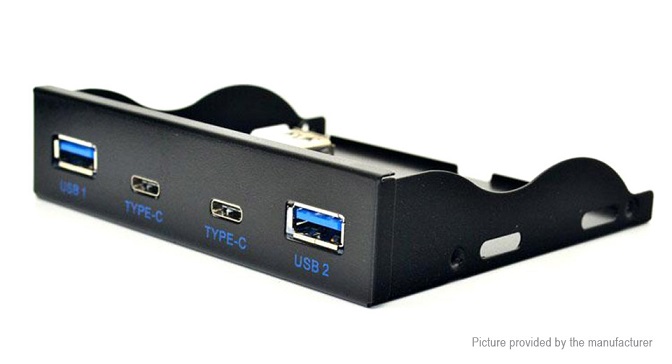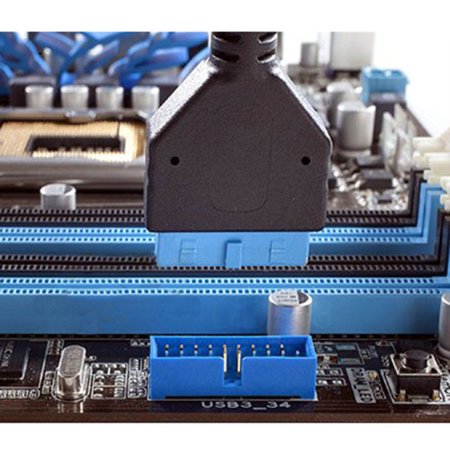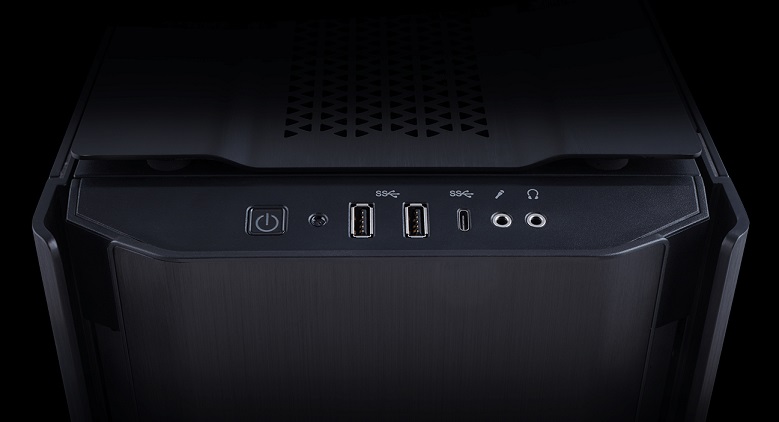If we want to connect an external peripheral to our computer or laptop the most convenient way to do that is to use the USB port, obviously if the peripheral that we want to connect has a USB port. However, coming to smartphones and other portable devices an USB port might be too much space-consuming and that’s why the brands have resorted to other forms of USB connectivity like micro-USB, and most other devices also rely on USB Type-C connectivity to connect peripherals and also for other purposes charging. Keeping that in mind, most PC and laptop manufacturers provide one or multiple USB Type-C port to connect smartphones and other portable gadgets.
Additionally, there are also some laptops that can draw power from the outlets through a USB Type-C port. Coming to desktops, you might or might not get a Type-C port on the motherboard at all. Obviously, at the time of purchasing a motherboard, getting a Type-C port isn’t a priority for all. At the time of purchasing a motherboard, we check other specifications like the type of processor that the motherboard supports, maximum supported speed for the RAM sticks, the number of PCIe slots, and other things. If having a USB Type-C port on the motherboard is your priority, you might have to give up on other useful features within the motherboard if you have to get the computer motherboard at a tight budget. But there are numerous other ways, you can get a Type-C port on your computer, and today, I will discuss a few of the most common ways here.
So, without any further delay, let’s get started with the different ways you can get one or multiple type C ports on your computer.
Using Type-C female to USB Type-A male converters
Starting with the simplest solution and this is also going to help you if you are having a very old laptop that does not come with a USB Type-C port. Just go to the market or order a USB Type-C to USB Type-A converter like the one that I have shown below. As you can see from the image the device comes with a USB male connector that will connect to the USB port on your computer or laptop. On the other end, there is a USB Type-C female connector. In the USB Type-C female connector, you can connect any Type-C cable and then connect the other end of the cable to your smartphone or any other portable device and start doing your task. As you do not need to open the computer case this is is the simplest and the best option for noobs who are not comfortable opening the computer case to make hardware changes.

However, before purchasing any of these converters, there is one thing that you should keep in mind. These adaptors might support USB 3.0 which means you will get good speeds while carrying out file transfers. Just like most other USB 3.0 devices, these converters are also backward compatible with USB 2.0 or other older standards of USB. Additionally, if you have a tight budget, you can also go for USB 2.0 converters and you will not be disappointed by the performance of those converters. If you want to connect your smartphone to your computer in this way, and your smartphone doesn’t support USB 3.0, you can stick to a cheap USB 2.0 converter for this purpose.
USB Type-C ports using PCIe expansion cards
If you are a little more advanced and are looking for a more versatile solution, here is the option for you. If you can get access to the computer motherboard, you can add multiple USB Type-C ports to your computer. You can get expansion cards that will add USB Type-C ports to a computer, and you can connect the expansion card to one of the free PCIe slots. If you do not have any free PCI expansion slot then this is not going to work for you. By adding the PCI expansion cards to get USB type C ports, you can add multiple USB Type-C rear ports. The cards might also come with SATA connectivity for extra power delivery if you want to charge your smartphones and other portable devices fast.

Depending upon the model that you are purchasing, you should get at least 2 USB Type-C rear ports, and if you want additional ports, you can also find some other models that might have 3 or 4 USB Type-C ports. Just connect the expansion cards to the PCI Express slot and it should automatically be detected by your computer. The Type-C ports should be functioning normally after that. If you get a CD with the expansion card, you might need to install the driver and after that, you should get working USB Type-C ports on your computer. As adding expansion cards involves opening of the computer case, and considering the size of the expansion cards to get USB Type-C ports, this particular process of adding multiple USB type C ports is not applicable for your laptop, notebook or any portable computer.
Adding front USB Type-C ports
If you are looking for more convenience, you can also add USB Type-C ports on the front panel of your computer if your computer case has a 3.5-inch or 5.25-inch adaptor panels in front. You can get an adapter from the market or online and connect it to the 3.5-inch of 5.25-inch panel.

The adapter will connect to the 19/20 front panel on the motherboard, where you can connect the USB 3.0 front ports that most modern computer cases come with. The front USB connector in the latest motherboards looks like the one that I have shown below. After you connect a 3.5 inch or 5.25-inch adaptor, it will draw power from the SATA connector on your motherboard.

At the time of shopping 3.5-inch of 5.25-inch adapter panels for USB Type-C ports, you should make sure, they also come with regular USB 3.0 ports. If there are no regular USB ports, you will no longer be able to connect regular USB devices to the front panel of your computer case. This is because, the modern motherboards come with a single 19/20 front panel connector, and you should make a choice between the external connector that comes with the USB Type-C ports, and the ports that already exist on the front panel of your motherboard.
Replace your existing computer case
The last option might not be the most cost-effective one, but this is also a great solution to get USB Type-C ports on the front panel of your computer. Replace the existing computer case with the one that comes with front USB Type-C ports. Along with the USB type C ports, you will also get regular USB ports and 3.5 mm audio jacks to connect microphones and speakers or headphones to the front panel. Getting a new computer case will involve disconnecting all the parts from your existing computer case that include the motherboard, power supply, hard drives, optical drives, and others to the new computer case and the complete process will also involve a lot of time and energy.

You can find fancy computer cases, however, those computer cases will sale like hotdogs due to the presence of additional USB Type-C ports that most users crave for. If you do not want to tinker around with your computer case, I am sorry, this option is not for you. But if you are using your computer case for long and want to rejuvenate the looks of your computer desk, you can find a number of fancy computer cases that come with USB Type-C port for connecting portable devices.
The USB Type-C port is one of the most versatile ports of the modern generation and that is the reason, why most laptops nowadays also come with USB Type-C port either for connecting peripherals or for the purpose of charging. As desktop computers are much more flexible compared to that of laptops, the motherboard manufacturers do not include the USB Type-C ports and they alternatively try to offer additional functionalities within the motherboard that can be more helpful to most users. All the different ways, which I have discussed here to add Type-C ports to your computer are quite effective and you should try one of the given options here.
So that was all about how you can add USB Type-C ports to your computer. Do you know any other great way of adding USB Type-C ports to your computer? Feel free to comment on the same below.
Related Posts
What is a juice-jacking attack? How can we be safe from such attacks?
Getting the right dashcam for your needs. All that you need to know
WhatsApp iPad App Gets Major Overhaul, Adds New Communities Feature
Moto G85 5G launched in India but is unlikely to beat VIVO or XIAOMI
Rise of deepfake technology. How is it impacting society?
Smartphone Apps Get Smarter- Meta AI’s Integration Across Popular Platforms